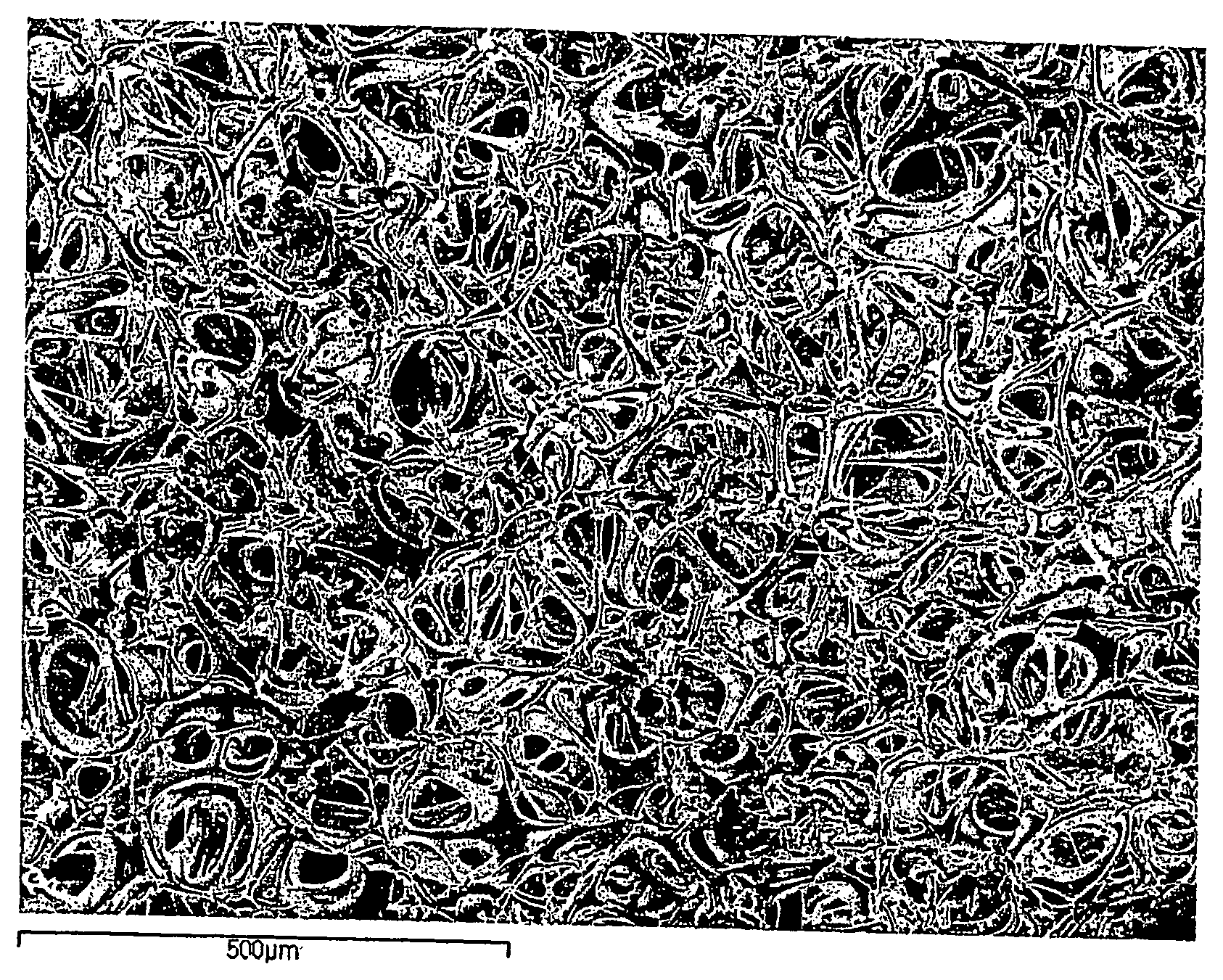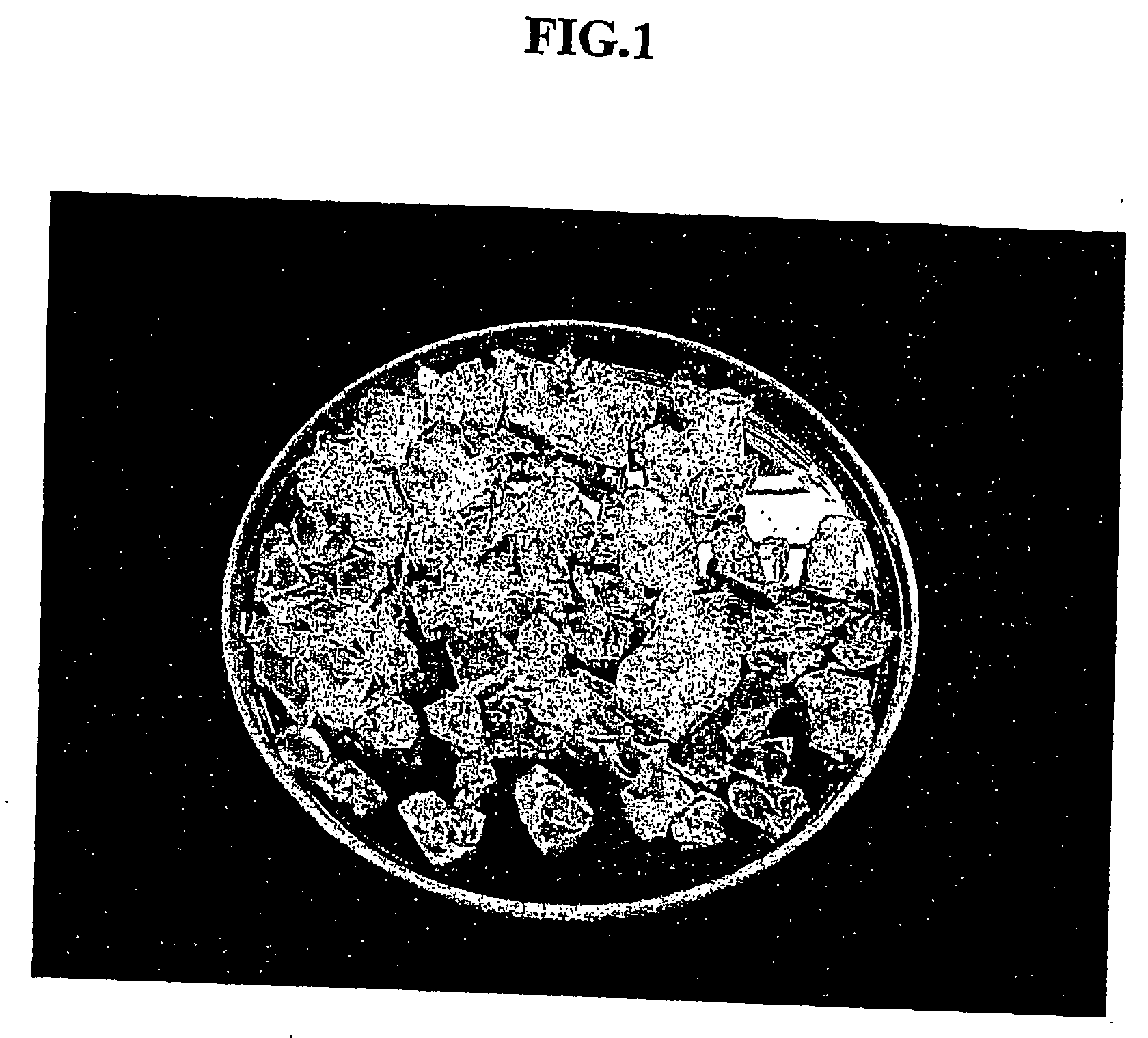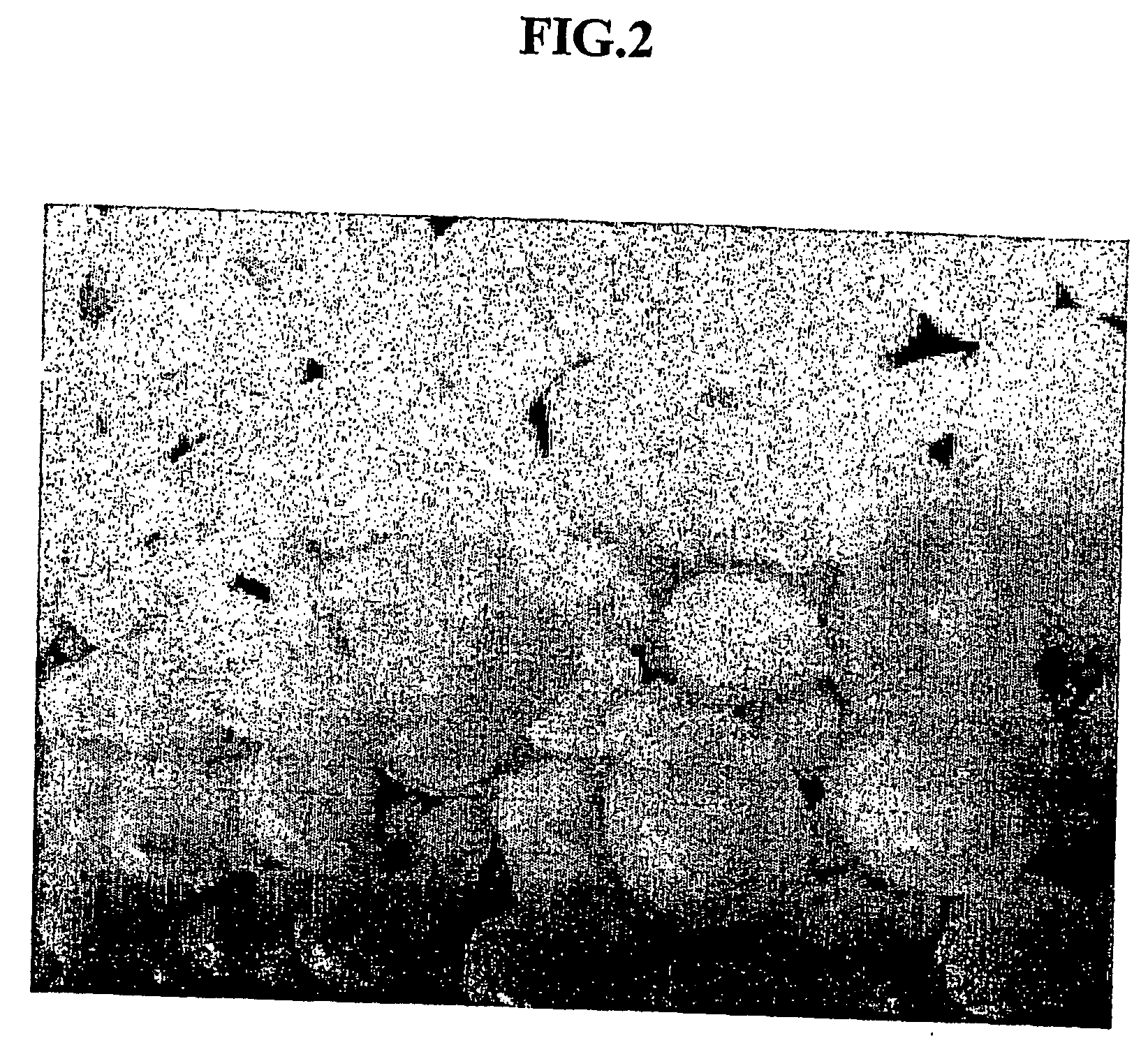Method for fabricating a porous silica sphere
a technology of porous silica and sphere, which is applied in the direction of silicon oxides, chemistry apparatuses and processes, silicon compounds, etc., can solve the problems of easy cracking, high cost of materials, and limited use of heat-insulating materials, and achieves less expensive materials and simple processes.
- Summary
- Abstract
- Description
- Claims
- Application Information
AI Technical Summary
Benefits of technology
Problems solved by technology
Method used
Image
Examples
example 1
[0052] Commercial silica gel (of Tong Yang Chemical Inc.) was treated with heat by putting it into an electric rotary tube furnace for 1 hour, and increasing the temperature at an average speed of 5° C. per minute up to 1100° C. All the silica gel foamed and formed porous silica spheres with a sponge style of porous structure. FIG. 3 illustrates a cross section of a porous silica sphere that was obtained in the process. As shown in FIG. 3, the homogeneous development of the porous structure in a porous silica sphere was confirmed.
example 2
[0053] Commercial silica gel (of Tong Yang Chemical Inc.) was heat treated in the same manner as in Example 1, except that the commercial silica gel was put into an electric rotary tube furnace and the temperature was increased at the average speed of 10° C. per minute up to 1150° C. and maintained for 1 hour. The fabricated porous silica sphere was similar to that of Example 1.
example 3
[0054] Commercial silica gel (of Tong Yang Chemical Inc.) was heat treated in the same manner as in Example 1, except that the commercial silica gel was put into an electric rotary tube furnace and the temperature was increased at the average speed of 10° C. per minute up to 1050° C. and maintained for 1 hour. In this example, although it contained some non-foamed silica gel, the result was similar to Example 1 such that most was foamed and formed porous silica spheres.
PUM
| Property | Measurement | Unit |
|---|---|---|
| temperature | aaaaa | aaaaa |
| temperature | aaaaa | aaaaa |
| size | aaaaa | aaaaa |
Abstract
Description
Claims
Application Information
 Login to View More
Login to View More - R&D
- Intellectual Property
- Life Sciences
- Materials
- Tech Scout
- Unparalleled Data Quality
- Higher Quality Content
- 60% Fewer Hallucinations
Browse by: Latest US Patents, China's latest patents, Technical Efficacy Thesaurus, Application Domain, Technology Topic, Popular Technical Reports.
© 2025 PatSnap. All rights reserved.Legal|Privacy policy|Modern Slavery Act Transparency Statement|Sitemap|About US| Contact US: help@patsnap.com



